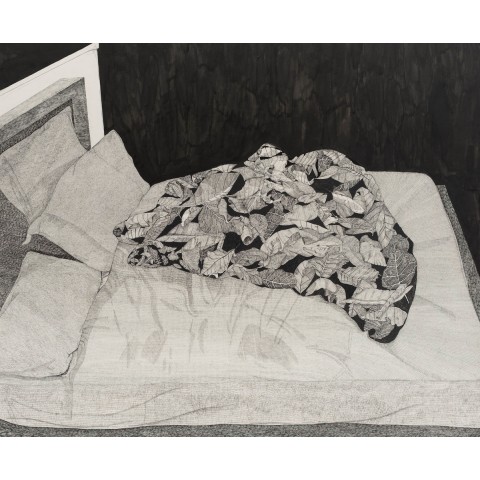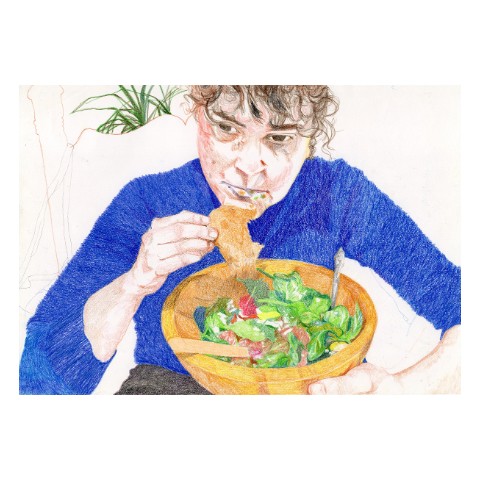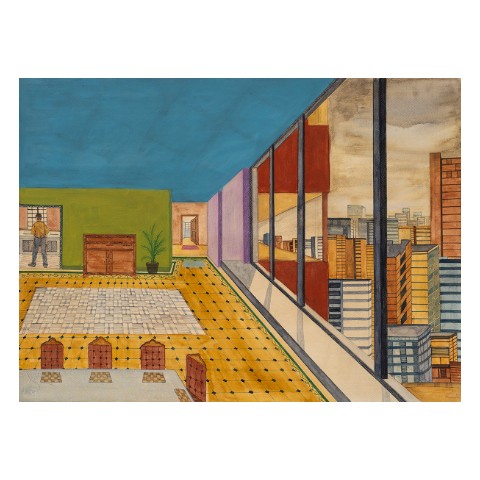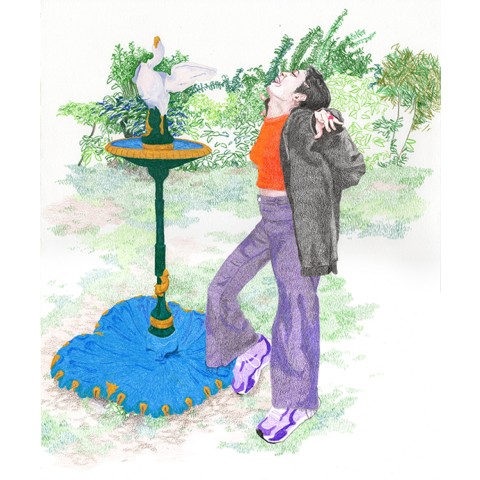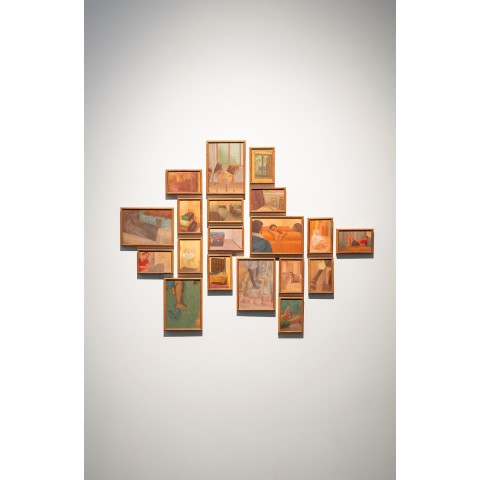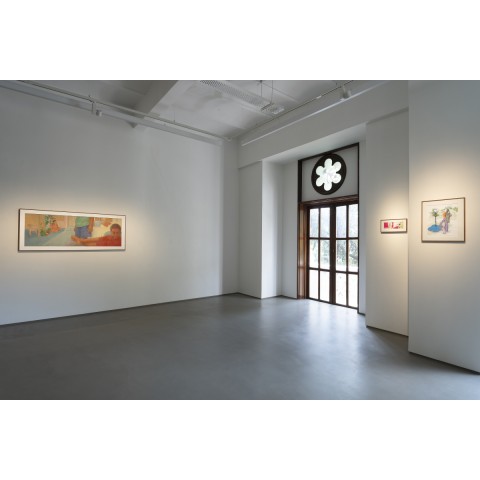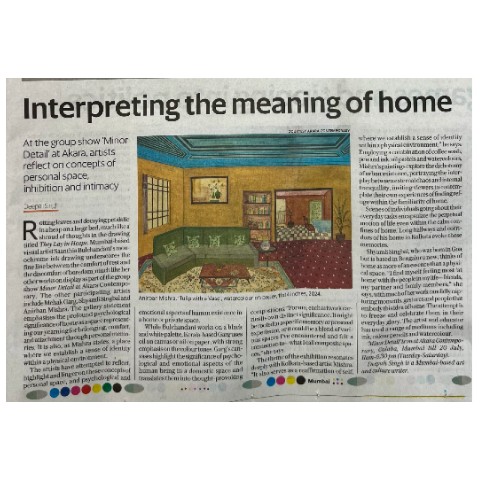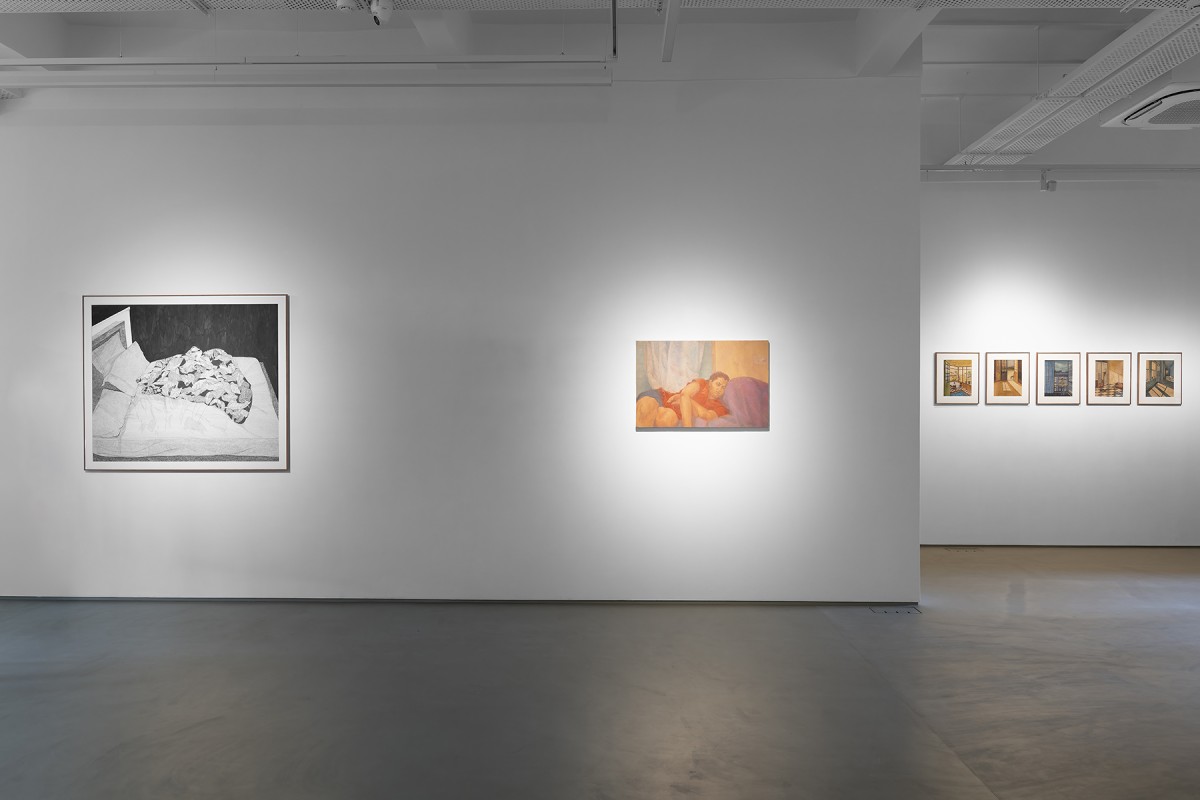
MINOR DETAIL: GROUP SHOW
June 13 - July 20 , 2024
Free of an outsider's gaze, the sense of home or private space has a very significant meaning in human psychology. It frequently connotes the need for belonging, familiarity, comfort, and attachment through personal memories and is also an affirmation of a sense of self, supported by a space. Homes are a spiritual refuge, a bulwark against loss and change, and a deep reflection of one's inner life. It is a shapeshifter created in fleeting moments, in our own bodies and our own surroundings. Artists have long been fascinated with domestic interiors by looking inward. We often create a home inside our own bodies, redefining what it means to inhabit our own selves within a space.
Home is a space to rest, to feel the pulse of one own’s solitude, to day dream and to take refuge from the constant moving world. Mumbai based Saanthia Bulchandani's intricately done monochrome ink drawings are a study of the constant dialogue between a space and a person.
They lay in heaps features a large bed that serves as a welcome reminder that one's own bed is the most secure and comfortable place in the house. After a long, exhausting day, it's a location where one may let go of all their troubled thoughts and gently fall asleep.
Bulchandani’s imagery draws out the subtle intricacies a domestic space upholds and how all the inanimate objects, with the touch of human presence, create a discourse on their own. The folds of the quilt, the scattered pillows on the bed, the plant at the corner of the stairway, the lone woman sitting on the sofa drifted in her thoughts, breathes on their own and reaffirms the language of a lived-in place where any inhibition are at rest.
Goa Born Shyamli Singbal’s idea of home is her loved ones, her people, and the warmth and closeness they share. For her, it’s the people who make her feel at home, not the physical space. Her works are almost like a journal, where she continuously documents and records the raw inhabited details of her people and her surroundings. Often, when she is far away from home and the only way to connect with her loved ones is through the advancement of technology, through video calls, she finds herself keeping a record of it by saving screenshots. She then later painstakingly renders them into frames, evoking a sense of comfort, safe space, and belonging, which is ‘home’ to her. She accomplishes alchemy by freezing and reliving these moments through her nuanced drawings.
In full bloom, the most mundane moment is captured in Shyamli's artworks. The small, colourful diptych Alterations at Home illustrates the lovely details of everyday activities that take place in homes. It shows, what looks to be grandma sitting in a brightly printed floral green dress and adjusting a piece of cloth in her sewing machine. This imagery is gradually fading away from today's fast-paced world and modern homes.
One cannot help but notice the joy on her mother's face as she consumes the candy in Mom Eating Kinderjoy. Shyamli's light-hearted observations do a great job of capturing impressionable emotions.
The semi-realistic oil paintings and the cluster of miniature oil on paper works, are a part of Haryana born Mehak Garg’s autobiographical exploration of her own self and space. With her subdued colour palette, Garg portrays the complexity and dynamism that a space and a mind can exchange. Her practice highlights the significance of psychological and emotional aspects of the human being in a domestic space and translates them into thought-provoking and emotionally rich compositions.
Garg's oil on paper diptych, The Untitled, depicts a typical day at her home. The piece resembles a collage of many aspects of her house, which is a common representation of a middle-class dwelling. A girl, maybe posing as herself, puts her chin on the foot of a loved one, whose salwar is folded up serving as a gentle reminder that home is ultimately a space of solace. Her mother is most likely seated on the floor in the distance, dressed in a maxi, a cosy garment worn by older Indian women, two plastic chairs are arranged haphazardly in one nook, and a climber money plant that is scything down the wall presumably stands out as a witness to their everyday activities. The frame portrays the monotony and routine of everyday life with a hint of warmth.
The home, even more than a structure, is a psychic space, it bespeaks intimacy. The ornamented rug in the drawing room, the long old corridors leading to the bedroom, the isolated chair by the balcony, the frames on the walls, the aquarium at the corner table are all part of a home that, too, grows old with us and often outgrows us by becoming a museum of memories. Kolkata based Anirban Mishra’s serene array of watercolour and ink drawings is a reflection of the same. Rooms and planes expose the contradictions between closed spaces and open spaces, often becoming dreamlike landscapes rather than fixed enclosures.
One can almost smell the scent of long-forgotten memories that cling to the long hallways or lonely corridors in Anirban's works. The house always appears to blend in between the past and the present, the old and the new, but it always stands tall as the custodian of all secrets and memories, as shown by the soft light that occasionally peeks through the massive glass windows in Cityscape and the partial view of the cloudy night sky in Observer.
Primarily a geometric construction, a house is built with precisely cut solid pieces within a well-fitting framework. Balance, and structure are its defining features. But it is palpable, because of the presence of people. House then, becomes an anchor of time, lives and memories.
Minor Detail reflects, highlights, and lingers on these concepts of personal space, inhibition, intimacy, and the psychological and emotional aspects of human existence in an interior space that are often bypassed in our day-to-day lives.
Curated by Shreemoyee Moitra
